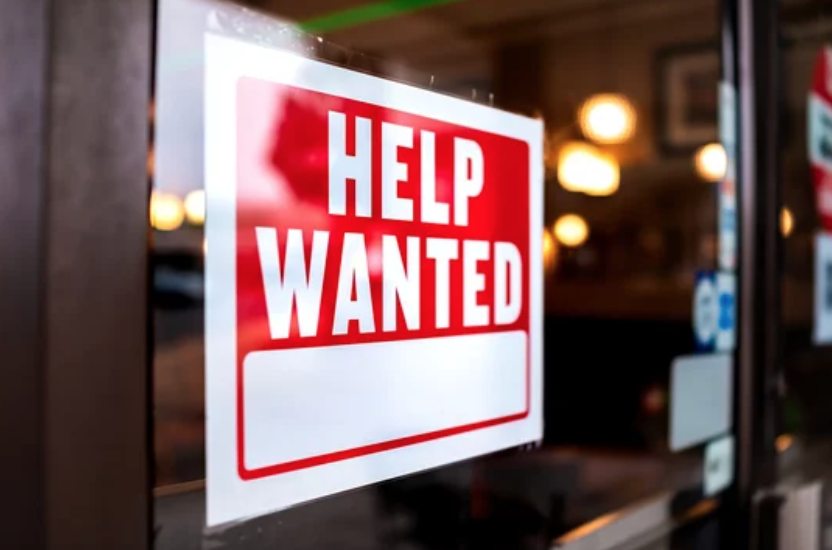
ATLANTA (GA Recorder) — Like others working in Georgia’s tourism industry, Hilda Thomason, general manager of the Georgia Mountain Fairgrounds in Towns County, says she’s seeing more customers than ever before, but getting nowhere near enough job applicants.
She’s made two hires in the last month, but she needs another six to eight people to help maintain the fairgrounds during the busy summer season.
“I don’t think it’s just Hiawassee, Towns County, I think it’s a lot of different counties in different states,” she said. “Everywhere you travel, everybody’s having the same issue. They’ll only open the bar or they’ll only make to-go orders because they don’t have enough hands. They don’t have cooks, they don’t have servers, simply because they’ve been drawing unemployment.”
The spread of COVID-19 vaccines is spurring more and more Georgians to get back to the workplace, but unemployment still remains historically high. A total of 176,688 Georgians were receiving unemployment benefits as of June 26, according to the state labor department. That represents an increase of about 22% from the week before when 144,750 Georgia residents received an unemployment check.
That number is much higher than it was before the pandemic — about 25,000 in January and February — but still nowhere near as high as it was this time last year when about 786,000 Georgians were receiving unemployment benefits as businesses imposed major layoffs as COVID-19 restrictions cut off customers.
Late last month, Georgia pulled out of extended federal unemployment benefits, including an additional $300 in weekly benefits, and reinstated work search requirements for displaced workers filing for unemployment benefits.
Gov. Brian Kemp and Labor Commissioner Mark Butler said they expect the reduction will push Georgians who have been drawing unemployment back to the workplace and help employers like Thomason. Worker advocates say many Georgians have good reasons not to go back to work, including a lack of child care and fear of COVID-19 variants.
On Thursday, Butler said only about 10% of new claims lately are the result of layoffs, with the majority coming from workers being fired or quitting instead.
At the height of the pandemic last April, 49% of those initial claims were due to employers lacking work for the employee and laying off staff, according to the state labor department. In January, that dropped to a quarter.
The bad news is that those claims for reasons other than layoffs take longer to process.
“Claims filed due to layoffs are determined quickly and payments can be released without delay,” Butler said in a statement. “However, we are not seeing many simple layoff claims at this time and we must review each claim thoroughly to ensure a claimant is eligible for payments, protecting the employer from wrongful claims and avoiding a potential overpayment for the claimant.”
The unprecedented number of unemployment filings created long delays for Georgians seeking benefits since the pandemic began, leading to lawsuits against the state.
The latest unemployment data was collected before Georgia’s exit from the federal program that supplemented state benefits by $300 a week whether or not the displaced worker was looking for a job. Once those new numbers are reported, Georgia could actually see its unemployment rate jump, said David Sjoquist, a professor of economics at the Andrew Young School of Policy Studies at Georgia State University.
That’s because the unemployment rate measures people who are out of work and seeking a job.
“With the change in policy, to continue to collect unemployment benefits, the person has to look for work, and thus will now be classified as in the labor force and unemployed,” Sjoquist said. “Some of these formerly non-working recipients of unemployment benefits will now look for and find a job; thus the number of employed individuals will increase. But in the near term, the increase in people actively seeking employment but not taking a job will be larger. Thus, the unemployment rate will increase. But the increase will not reflect a weakening labor market; it will just be the result of how people collecting unemployment benefits are classified.”
Thomason said she’s hopeful the change will reduce that number.
“I do think that they’re going to either starve to death or come out and work sooner or later because when the money runs out, they’re gonna have to do something,” she said. “So I think you’ll see a difference, but I think it’s going to take a little while.”
Just under 20,000 Georgians filed an initial unemployment claim during the week ending July 3, representing a decrease of about 4.8% from the week before, according to Georgia Department of Labor data released Thursday.
Nationwide, initial claims remained relatively flat with 373,000 initial claims for the week ending July 3, an increase of about 2,000 from the week before. A total of 3.2 million Americans received unemployment benefits during the week ending June 26, down by about 49,000 from the previous week.







